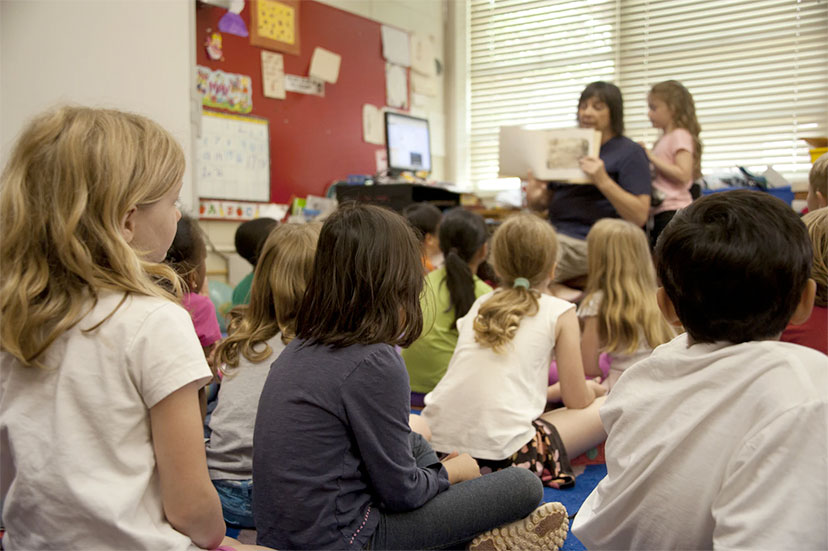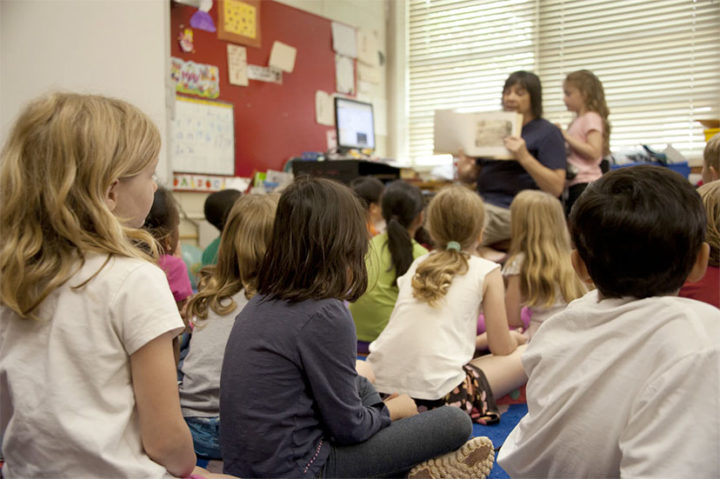This story by Matt Barnum appeared on Chalkbeat.org on October 1, 2021.
In Denver, schools are struggling to find nurses. In Detroit, they’re short security officers. Principals across the country say substitute teachers appear to have vanished altogether.
In Anchorage, Alaska children in several schools without enough cafeteria workers had to forgo hot meals. In New Jersey, a bus driver shortage has left hundreds of students with disabilities without access to school for weeks. Many large school districts began the year with more unfilled teaching positions, too.
The staffing shortage has become a defining feature of this school year. Non-teaching, often lower-paid roles seem to have been particularly hard to fill.
“It is affecting the whole climate of the schools,” said Sabine Phillips, whose middle school in Broward County, Florida has buses regularly arriving late and few substitute teachers. “It’s just hard to keep people in a positive mood.”
So what is going on here? There’s no one answer, according to a range of experts watching these shortages nationwide, but a constellation of potential explanations. Some are exacerbated versions of old problems: schools need people to choose challenging roles with relatively low pay. Other explanations are new, like federal money boosting demand for educators, the continued disruption to childcare, and COVID-related health concerns.
Here’s what we know.
Reason #1: The entire economy is in flux
Shortages are not just a schools problem — they’ve hit the rest of the economy, too. There is no one agreed-upon explanation for the broader staffing struggle, but researchers say what’s going on across the economy offers clues to what’s going on in education.
One theory is that there’s a mismatch between the jobs available now and the jobs people previously held. In other words, it’s not simple for a laid-off construction worker, say, to get a job as a school bus driver in a different part of the country.
There is some evidence for this theory, which economists refer to as “reallocation friction.” Plus, when people are laid off — as many school staff were last year — it takes time to reconnect with an employer.
Some also suggest that many workers are simply reconsidering their careers. One survey found that a majority of unemployed workers were considering changing fields. “The problem is we are not making enough money to make it worth it to go back to these jobs that are difficult and dirty and usually thankless,” a former retail worker told the Washington Post. “You’re getting yelled at and disrespected all day.”
Workers may have the savings to not immediately enter the job market or to hold out for a job they’d prefer because of aid provided by the federal government in response to COVID, including the unemployment insurance, direct cash payments, and child benefits. Studies haven’t found that cutting off unemployment insurance quickly boosted hiring, though.
Another explanation is the continued presence of COVID. Although vaccines are now widely available, some are still hesitant to return to work as the delta variant spreads. Schools may be especially affected here, as they’re more limited in offering work-from-home arrangements than some private companies.
Many schools also face the flip side of this challenge: some potential staffers may be reluctant to work in schools that have imposed strict mask, testing, or vaccine mandates.
“There’s this double-edged reason of folks not wanting to return out of concern for their safety because of the coronavirus itself and folks not feeling comfortable getting vaccinated or getting tested,” said Luis Rodriguez, an NYU education researcher.
Continued disruptions to schooling and childcare may also be keeping many parents, especially mothers, from re-entering the workforce. Unlike last year, nearly all schools across the country have offered in-person instruction. But frequent quarantines and transportation challenges mean childcare headaches haven’t gone away for many families. That could affect the workforce in schools, which are disproportionately staffed by women.
There doesn’t seem to be a consensus about how all these explanations fit together. “It’s actually quite puzzling,” said Li Feng, an education researcher at Texas State University. “There is a lot of different conjecture about what’s going on in the broader labor market.”
Reason #2: For schools, longstanding recruitment roadblocks are looming large
Many schools struggled to hire bus drivers before the pandemic. High-poverty schools faced high rates of teacher turnover. Special education, math, and science teachers were constantly in short supply.
So while the school staffing shortage is more severe than it has been at any point in recent memory, it’s not entirely new either. Detailed data is scarce, but a number of school districts told Chalkbeat that their biggest teacher shortages are in areas where hiring has long been tough.
In those areas, “It’s only going to get worse, not better,” said Feng.
Longstanding shortage areas generally have longstanding pay problems. Math and science teachers can typically earn much more outside of the classroom than in it. And it’s jobs like bus drivers with persistently low wages that seem to be experiencing the biggest shortages right now.
“The system can’t operate without their support staff, without their school aides, without their classroom aides, without their bus drivers and nurses,” said Rodriguez. “This is a wake up call for many folks to be more attentive to those staff.”
Short-term bonuses can help, but make less of an impact in increasing the supply of teachers or other certified jobs like counseling that require longer-term training. Low-wage jobs require specific training and skills, too: Bus drivers, for instance, must have a commercial driver’s license.
“There’s a time element here,” said Helen Ladd, a Duke University economist who studies education. “It takes a while to increase the stock.”
“The problems that are systemic, they need systemic solutions,” said Dan Goldhaber, an education economist at University of Washington.
So why not use federal relief money to raise pay to attract more people over the long term? “We’ve got stimulus dollars that are temporary in nature,” said Devin Fletcher, the chief equity and talent officer in Tulsa, Oklahoma, where the school district started the year with 193 vacant teaching positions. “We wouldn’t be able to sustain it.”
Reason #3: Schools are looking for more staffers than ever, backed by federal dollars
Schools, especially in high-poverty areas, are swimming in federal cash right now, and many want to use it to hire counselors, tutors, social workers, and teachers to address students’ needs. That means that school shortages likely reflect a rise in the number of positions schools are seeking to fill.
One nationwide survey over the summer found that most school district leaders said they want to add counselors to support students’ mental health. Others are trying to launch ambitious tutoring programs. Some districts say they have taken on teachers to lower class sizes or add extra instruction. COVID may have increased the need for school nurses, too.
In the midst of the broader labor shortage, higher demand leads to even more severe hiring challenges. And if schools can’t hire the staff they want to, that could derail their pandemic recovery plans.
“I think a bunch of districts have pulled back from investments in counseling and social workers,” said Jonathan Travers, an education consultant who works with districts across the country. “They don’t feel confident they can make those hires.”
Potential reason #4: Increased turnover? It’s too soon to say
Going into last school year, some feared a mass exodus of teachers and school staff. That didn’t happen. In fact, turnover among teachers generally fell, probably because of the weak economy.
“Teachers have relatively stable jobs, so if the general unemployment rate in the economy goes up, teachers have an incentive to stay where they are,” said Ladd. “The other side of the coin is if the unemployment rate goes down, then teacher attrition may go up.”
So with a stronger economy and heightened stress in schools, has turnover spiked among teachers or non-teaching staff?
The data is still thin. The federal Bureau of Labor Statistics has not seen increases in turnover in education jobs in recent months. But data obtained by Chalkbeat from seven large districts — including Austin, Texas and Clark County, Nevada — shows teacher turnover had increased in each compared to the year before. Many districts, though, said they hadn’t yet calculated updated turnover numbers.


